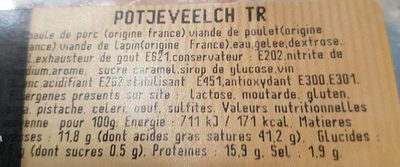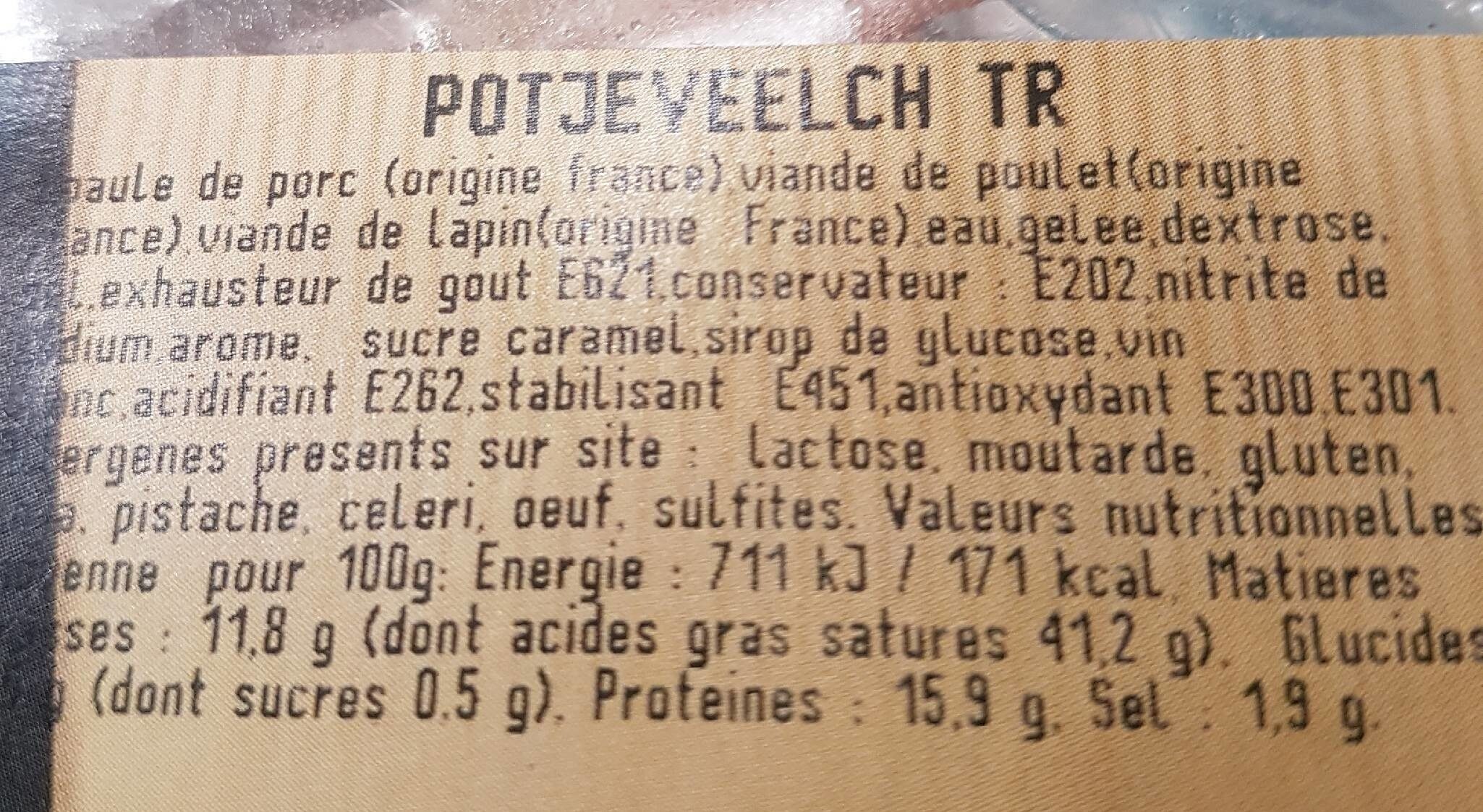Potjerleesh - Sans marque - 0,200 kg
This product page is not complete. You can help to complete it by editing it and adding more data from the photos we have, or by taking more photos using the app for Android or iPhone/iPad. Thank you!
×
Barcode: 3338910000238 (EAN / EAN-13)
Quantity: 0,200 kg
Packaging: Plastic, Vacuum-packed
Brands: Sans marque
Categories: Meats and their products, Meats, Prepared meats, fr:Potjevleesch
Labels, certifications, awards:
fr:Saveurs en Or
Origin of ingredients: France
Manufacturing or processing places: France
Traceability code: FR 62.194.002 CE - Calonne-Ricouart (Pas-de-Calais, France), EMB 62194A - Calonne-Ricouart (Pas-de-Calais, France)
Countries where sold: France
Matching with your preferences
Environment
Packaging
Transportation
Report a problem
Data sources
Product added on by tacite
Last edit of product page on by tacite.
Product page also edited by geodata, kiliweb, openfoodfacts-contributors, packbot, yuka.U0pKWUFmd3R2dEpVaHZjZHBUUGswZW9sMjhhb2YwQ3lFdWd5SVE9PQ, yuka.sY2b0xO6T85zoF3NwEKvllV6DsbG_mqeCkDlllSE38yMHLfBX9UqzLHaK6s.











